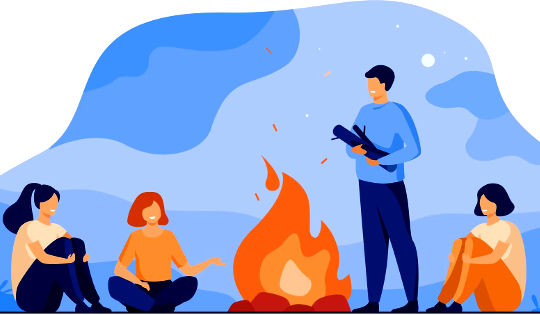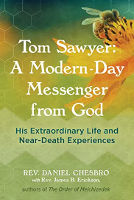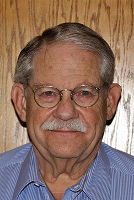
Image by pch.vector
Among humans, storytelling is universal. It is what connects us to our humanity, links us to our history, and gives us a peek at our possible futures. It automatically appears during childhood, and, as far as I know, can be found in every culture on the planet. Additionally, it goes back in history as far as anyone knows—I have heard that the elements of some stories go back 6,000 years. It is so pervasive that it is taken to be a human adaptation for creating, cementing, and maintaining social bonds while promoting cooperation among individuals and groups.
The Value of Storytelling
I understand that in some societies, storytelling has a value that well exceeds what you might expect; that both storytelling and the storytellers themselves are more highly prized than basic skills such as hunting, fishing, foraging, and medical knowledge.
At first glance this seems quite odd, as those skills are conducive to survival. But historically, and especially among indigenous populations, stories typically have a content that encourages cooperation, egalitarianism, and gender equality, and these are higher-order survival skills that lead to social cohesiveness, order, and survival of the group. Understand this, and the value placed on this aspect of culture begins to make a lot more sense.
And there’s more. It has been found that in some of these societies, storytellers have more children, and the best storytellers are considered the prime choice for a living companion.
This really should not be surprising, for storytelling typically reinforces the ethics, norms, mores, and sanctions of the culture. Storytelling is one way we shape our existence and make sense of it; a way to make sense out of the chaos of human existence. This is all to say, that accomplished storytellers are the keepers of valuable cultural knowledge, and they are responsible for passing this knowledge intergenerationally.
Why We Need Stories
It seems that we need stories and use them for very cogent reasons. Stories enable us to feel things we haven’t felt so we can experience pain, joy, heartache, love, and so forth, thereby gaining empathy. ]
Similarly, stories allow us to reexperience those feelings we have in common with others, thereby reaffirming our own humanity and reinforcing that we are not alone in those respects. In addition, in stories, we may see ourselves in such a way as to gain insight and understanding into who and what we are, and perhaps who and what we’d like to become, and become motivated to change, develop, and grow.
In stories, we can find friends in the characters we’d like to have as friends and love in the characters we are attracted to, aiding in sharpening our criteria for selecting such people in life. In addition, a tale containing caveats for outcomes that are less than desirable can serve as cautions for behavior, especially in social interaction.
Stories entertain, teach, educate, entice, provoke, agitate, incite, intellectually stimulate, inspire, predict, shape social thinking and action, dispel ignorance, promote tolerance and compassion, model social justice, express beauty, and often show us our reflection, however hard it may be to look at.
Storytelling Is a Two-Way Street
However, the process of storytelling is a two-way street. Over time, storytellers have learned that their audiences prefer stories with a beginning, a middle, and an end. Furthermore, audiences are drawn to stories that contain characters like themselves, or at least have characteristics they can relate to. In addition, audiences like to be drawn into the story, and to use their imaginations to participate in the action.
So the best storytellers use every tool at their disposal: tone, tempo, timbre, volume, rhythm, breathing pattern, facial expression, eye movements, body movement, proxemics, gestures, and so forth, to enrich the imagination of their listeners, and hence, their experience of the story. This makes the building of a climax, coupled with a satisfying ending, all the more enjoyable.
Storytelling Is an Important Tradition
The society we now live in could not exist without the gifts of generations past. Human beings are creatures of habit, and we hand down knowledge (and its lessons) from one generation to the next. We want to take pride in leaving a body of knowledge for our descendants to utilize to avoid our mistakes and the mistakes of the past, while continuing our rich cultural traditions and improving the human condition.
We hope to give our descendants insights into the problems we’ve faced and an advantage not found in other species: a pool of communal knowledge. Storytelling enables this movement of knowledge; therefore, it is my belief that storytelling is the single most important tradition humans engage in. ...the teachings, lessons, insights, and understanding they provide are timeless. They are what one may call “extra-cultural,” in that they deal with aspects of the culture, both past and present, and the culture’s relationship with Deity and individual relationships.
Copyright ©2022. All Rights Reserved.2
Reprinted with permission
from the Introduction of the book.
Article Source:
Tom Sawyer: A Modern-Day Messenger from God: His Extraordinary Life and Near-Death Experiences
by Rev. Daniel Chesbro with Rev. James B. Erickson Through more than 160 remarkable stories, Rev. Daniel Chesbro and Rev. James B. Erickson share Tom Sawyers' (1945-2007) profound and enlightening insights on life, death, and Unconditional Love. T
Through more than 160 remarkable stories, Rev. Daniel Chesbro and Rev. James B. Erickson share Tom Sawyers' (1945-2007) profound and enlightening insights on life, death, and Unconditional Love. T
his book reveals Tom as a modern-day messenger of God who returned to life a powerful conduit of Unconditional Love, compelled to create positive change for humanity.
Click here for more info and/or to order this paperback book. Also available as a Kindle edition.
About the Authors

 Rev. Daniel Chesbro is an American Baptist minister who founded the worldwide Order of Melchizedek, a modern-day school for prophets, in 1986. Teaching internationally, Chesbro is the author of The Order of Melchizedek and lives in Conesus, New York.
Rev. Daniel Chesbro is an American Baptist minister who founded the worldwide Order of Melchizedek, a modern-day school for prophets, in 1986. Teaching internationally, Chesbro is the author of The Order of Melchizedek and lives in Conesus, New York.
Rev. James B. Erickson is a therapist with a deep interest in historical and sacred writings. He was ordained into the Order of Melchizedek 30 years ago and lives in Minneapolis, Minnesota.

























